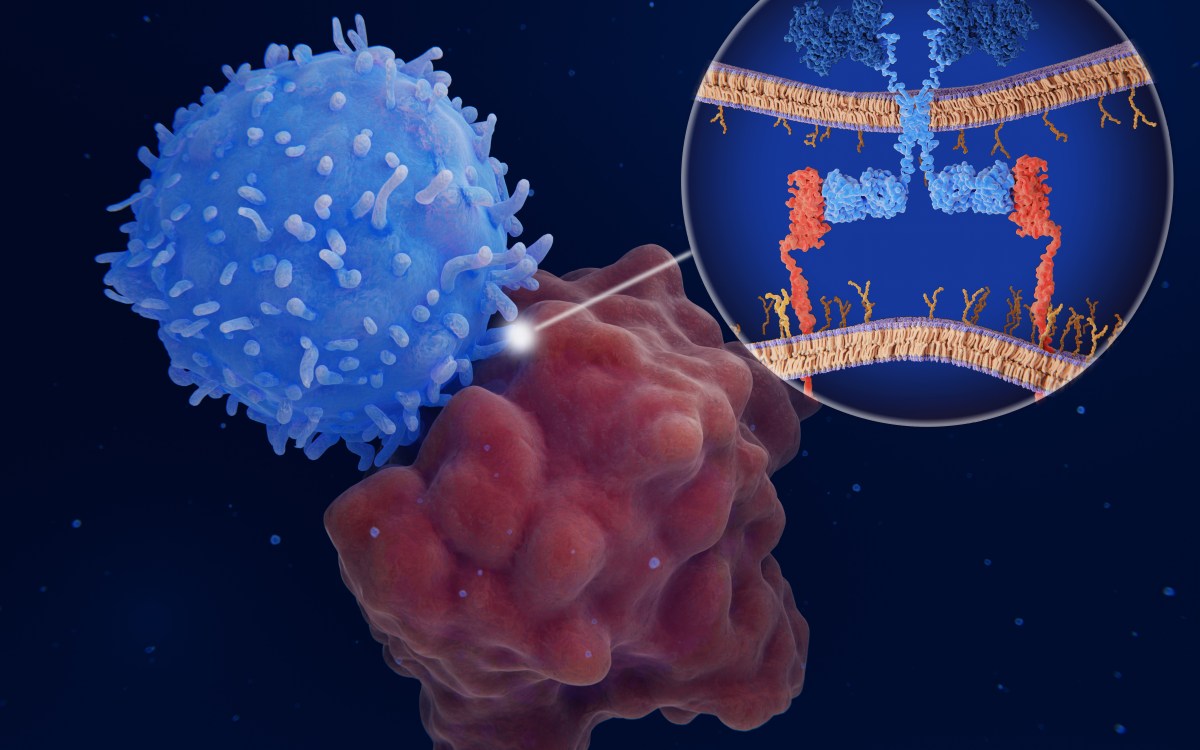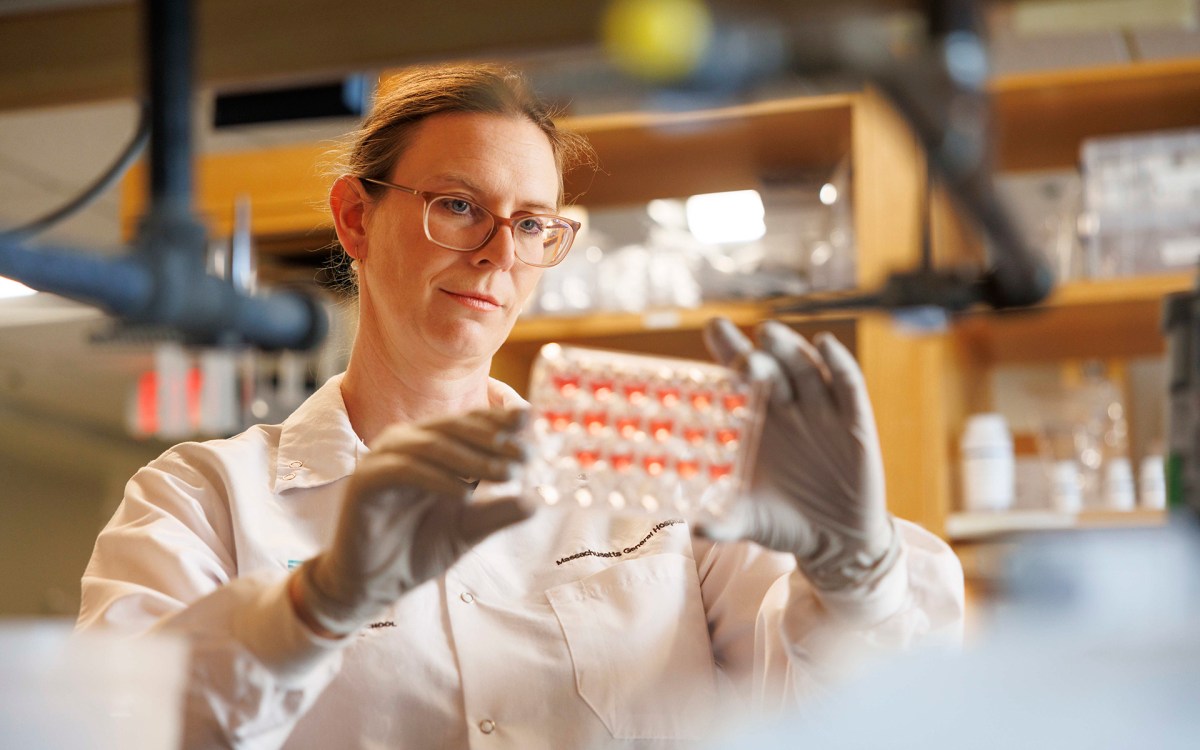Resistance mutation found for Gleevec
Higher doses may save some patients — are multipronged therapies next?
The drug Gleevec was stunningly successful in treating patients with chronic myelogenous leukemia (CML) at early stages of disease, but quickly stopped working in most patients with more advanced forms of CML. Last year, researchers at UCLA headed by Charles Sawyers found that some resistant patients carried a mutant version of Bcr-Abl. The original mutation, T315I, confers resistance by altering the enzyme’s physical structure to block Gleevec from binding. Now, in what appears to be a serendipitous twist, Harvard Medical School researchers have discovered what is responsible for the inability of some patients with CML to respond to Gleevec (formerly STI-571). They have found a version of the rogue enzyme, Bcr-Abl, that resists Gleevec’s arrows. “We weren’t looking for Gleevec-resistant mutants,” said Richard Van Etten, Harvard Medical School associate professor of genetics at the Center for Blood Research. Van Etten along with Sergei Roumiantsev, Bradley Brasher, and colleagues reported the discovery in the Aug. 6, 2002, Proceedings of the National Academy of Sciences.





